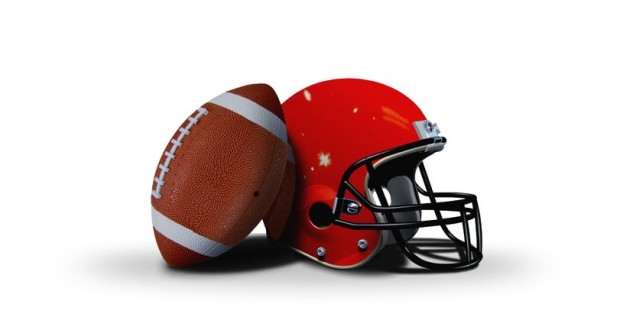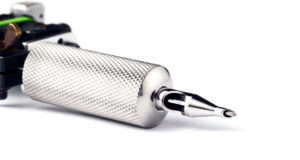Even if you’re only a casual sports fan, you’ve probably heard a good deal about the problem of concussions in sports. Specifically, football and soccer both have a major problem with this type of injury; a 2007 report published in the Journal of Athletic Training identified these two sports as the leading cause of concussions among high school and collegiate athletes. In the United States, concussions sustained by football players have been the subject of numerous articles and in-depth news reports. While there will likely never be a way to fully prevent concussions in football, a new type of helmet may help reduce the frequency of this injury.
Concussions and Football Players
Anyone who’s ever watched a football game knows that the sport is not for the faint of heart. Consider that during the 2011 season alone, players in the National Football League (NFL) suffered a total of 4,493 injuries. During the same season, teams reported a total of 266 player concussions.
The immediate impact of concussions can vary in severity. According to the Mayo Clinic, the common signs and symptoms of a concussion are as follows:
- Headache
- Temporary loss of consciousness
- Confusion or feeling as if in a fog
- Amnesia regarding the circumstances of the injury
- Dizziness Ringing in the ears
- Nausea or vomiting
- Slurred speech
- Fatigue
In addition to the symptoms listed above, the Mayo Clinic also notes that concussion victims may experience a number of other problems, including poor concentration, diminished memory, an altered sense of taste and smell, disrupted sleeping patterns and sensitivity to light and noise. These additional symptoms may occur immediately after the patient suffers the injury, or they may not appear for hours or days afterward.
The long-term impact of sustaining a concussion (or multiple concussions) has been the subject of much medical research. Furthermore, researchers have also examined how this injury may compromise the long term health of football players. A 2013 collaborative study, for example, linked depression to football-related concussions. Authored by faculty at the University of Texas at Dallas and University of Texas Southwestern Medical Center, this report found that 40% of retired NFL players with a concussion history displayed symptoms of mild or moderate depression.
The Impact of a Better Helmet
A football player wearing a thicker helmet with additional padding is much less likely to suffer a concussion. Such was the opinion of a group of researchers from several prominent colleges, who monitored a total of 1,833 college football players from 2005 to 2010. For this study, all volunteers were required to wear one of two types of helmets, known as the VSR4 and the Revolution. The former is older model with less padding, while the latter is a relatively new type of helmet that offers more protection. Both helmet models are manufactured by Riddell, an American company that produces a wide range of football equipment.
All of the helmets worn by the players were equipped with sensors, allowing the researchers to record the impact of hits to the players’ heads. These sensors were used to determine the head acceleration after each hit (“head acceleration” occurs when the head is pushed in a certain direction following a blow or collision). The study included players from the following schools:
- Virginia Tech University
- Brown University
- University of North Carolina
- University of Minnesota
- Indiana University
- Dartmouth College
- University of Oklahoma
- University of Illinois
Over the six year data-collecting period, the researchers recorded nearly 1.3 million “head impacts,” or occurrences in which the head was on the receiving end of a hit. Of these total, nearly three fourths (958,719) involving players wearing the Revolution model helmet. This group suffered a total of 37 concussions during the duration of the study, giving them a ratio of 3.86 concussions per 100,000 head impacts.
In contrast, those using the older VSR4 model were significantly more prone to suffering concussions. Players relying on this older helmet suffered 322,725 total head impacts, leading to 27 concussions. This worked out to 8.37 concussions per every 100,000 blows to the head. Essentially, the Virginia Tech researchers found that wearing the Revolution helmet reduced a player’s odds of concussion by 54 percent. The Journal of Neurosurgery published the study on its website in January 2014.
Making the Switch
Despite its limitations, the VSR4 was a very popular product; at one point, roughly half of all colleges bought this type of helmet for their football teams. This popularity helped the VSR4 enjoy a nearly twenty year lifespan before being discontinued in 2011. Conversely, the Revolution was first released in 2002. Given the longevity and popularity of the VSR4, many teams are reluctant to exchange it for a newer model. Fortunately, there are some signs that the Revolution is gaining acceptance; two prominent professional quarterbacks, Peyton Manning and Russell Wilson, both wear Revolution model helmets.
Injuries have been an unfortunate part of football since the game’s inception. With the introduction of the Revolution helmet, there is reason to hope that players will enjoy better protection against concussions in the future.
 Natural Knowledge 24/7 Educate yourself with nutrition, health and fitness knowledge.
Natural Knowledge 24/7 Educate yourself with nutrition, health and fitness knowledge.






